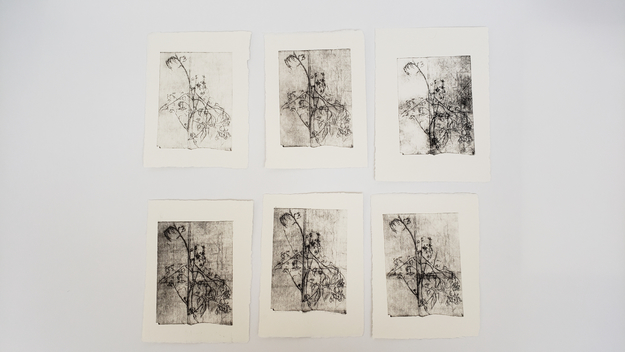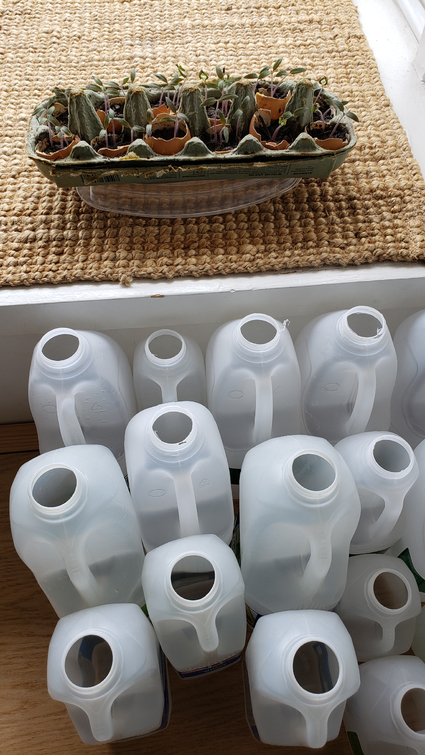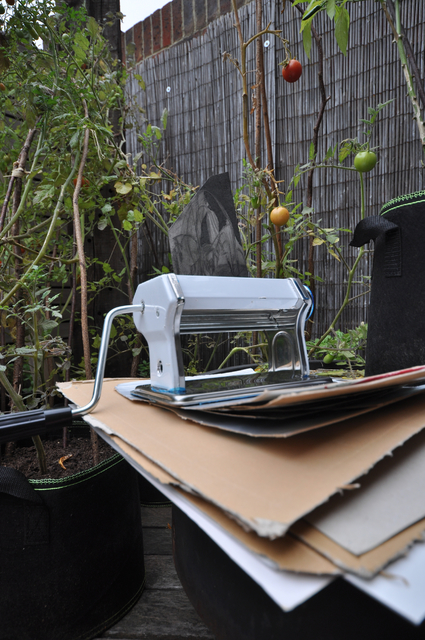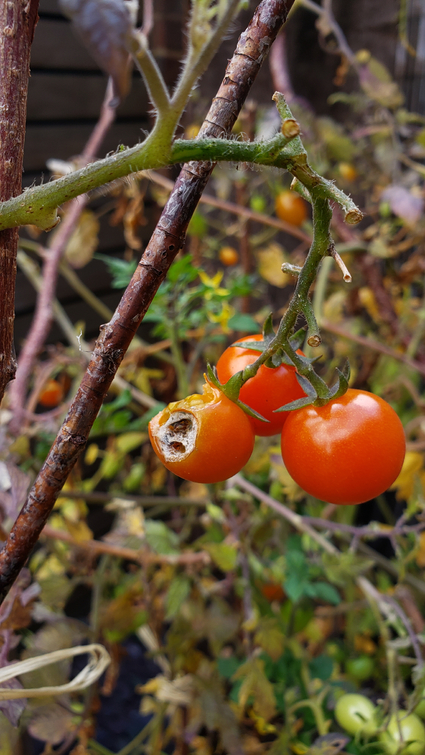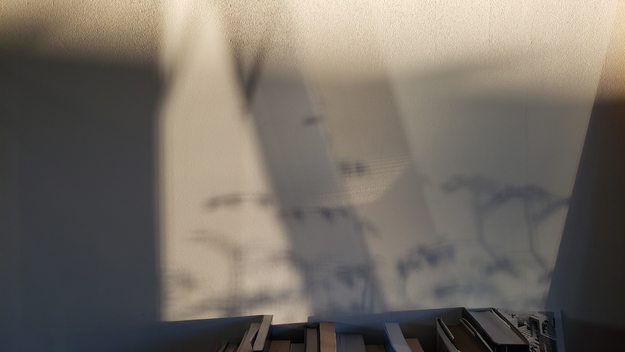Project Description
In 2020, like many people, I started to grow tomato plants** inside city dwellings. I started eating "in-season" with my tomato plants - I ate food to generate suitable waste, such as egg shells and yoghurt pots, for seeding and repotting growing tomato plants; replacing the start-of-a-work-day-rituals of the unloved commute with the daily watering and admiration of tomato plants; collecting tens of moments of tomato gestures as artwork - through printmaking (using waste materials as plates for intaglio printmaking). Practising with tomato plants, not as crops or subjects but as partners, has developed into habits of noticing and caring for the non-human.
Time and timing
Is it the number of milliseconds that have passed since Epoch, January 1, 1970 00:00:00.000 GMT, on the Gregorian calendar system - as displayed on computers/mobile devices? Or at the day of the "Awakening of Insects", "Grain Rain" on the lunisolar calendar systems that is also observed in East Asia and parts of South East Asia. The calendar, commonly used for counting and accounting time, is a construct.
The Gregorian calendar system is acknowledged as instituted by Pope Gregory XIII in 1582 as a correction to Julian Calendar, which now also has a new version called the Revised Julian Calendar anyways. The Gregorian Calendar is colloquially known as the Western calendar, arguably the dominant calendar - for human matters on Earth. But the Western calendar is not one calendar - different countries have annotated it with their local special days/festivities. In any case, the world of humans mostly manages to sync up.
Observing more than one calendar system is not exactly uncommon. Calendars from the lunisolar calendar system are observed in parallel to the Western calendar - even though they may not be observed with the same intensity at all times by everyone in a location. A lunisolar calendar that I know of is known to me as the Agricultural Calendar, with roots in ancient China and has twenty-four "solar terms" - "Awakening of Insects" and "Grain Rain" are two examples of these solar terms. These solar terms provide some ideas about the seasonal changes in the environment.
Time Givers, by Tomato Plants et al. - a plan
Other than light-dark cycles.
Other than seasonal cycles.
Other than weekday-weekend cycles.
Other time-giver for more-than-human care.
It occurred to me that making a time-giving/calendar installation with tomato plants would be my way to explore ways to attune, rather than to count and account, over time - in a speculative and practiced way. Perhaps there is a kinder kind of time. Like the many parallel calendar systems, this one too, will be one more available to be observed in a pluralistic world.
How long?
The research and installation would take one tomato plant growing season (approximately April to Oct, depending on the condition) to develop. Ideally starting in 2023.
Where?
The project would be impossible without tomato plants, my project partners. So the requirement is a place that will be able to host tomato plants and the installation. Ideally, the place is also within reasonable distances to locally available materials/wastes, printmaking and/or maker-space/repair shop facilities so that I can work closely with the tomato plants, but this can be flexible.
It is likely that I would have to work on this over non-contiguous periods between April and October, which would require the participation of humans from the local area and finding a way to make the project a participatory one in the first month of the season.
Estimated costs
Material for experimentation and production of installation: €550
Residency fees for live-work printmaking studio in Amsterdam: €1250 x 2 months
Travel cost from London by Train: €125 x 2 (2 return-trips assuming the time spent in Amsterdam is not contiguous)
A stipend for sustenance/mobility for the season: happy to take guidance
Possible ways to expand the project
If I could, I would love to spend more months with tomato plants in residency, more than the budgeted 2x 1-month residency within this proposal. My work with tomato plants has naturally expanded through support and working with tomato plants under different situations since 2020 and I anticipate it would continue past 2023. Maybe I would work with different types of tomato plants in different locations, but I would only know when the tomato plants of 2023 will let me know.
Overview of entities involved
Tomato Plants of 2023, probably will be grown from the seeds of a locally sourced tomato.
Stephanie Pau is a participatory speculative designer, conceptual artist and ex-solutions architect. Humans are not the only entity in the world, machines and the rest of nature, too, share the same world. She has spent about 15 years working with machine and human systems before her present focus on working tomato plants (and the waste materials they have led her to). Steph holds a Master of Research (MRes) degree in Healthcare and Design from Royal College of Art, UK (2017-2019). Her work on collective imagination and design-based futures thinking with the RCA has been published in academic journals/conferences and continues the practice as Studio ANDNAND in 2020. She works with the medium of printmaking, installations, design games and abstract larp to explore and practice care, repair and a deeper sense of more-than-human well-being. Somehow, questions about time keep seeping into her work.
Portfolio: www.whereisfuture.com | Studio: www.andnand.studio
Instagram: @whereisfuture
This proposal is part of the 'Penny for your Thoughts' project 2022.
